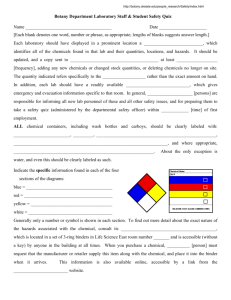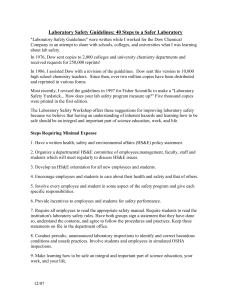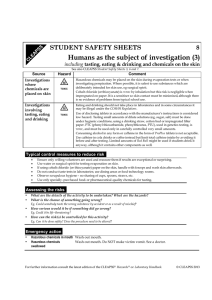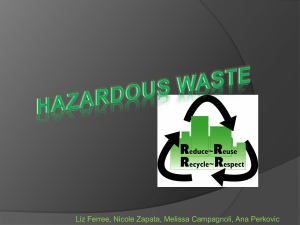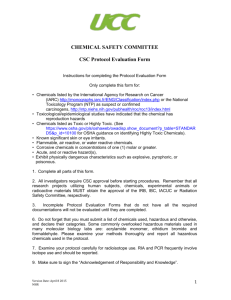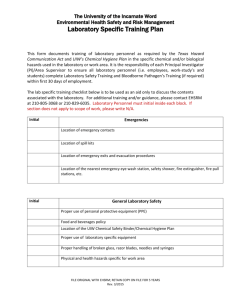advertisement
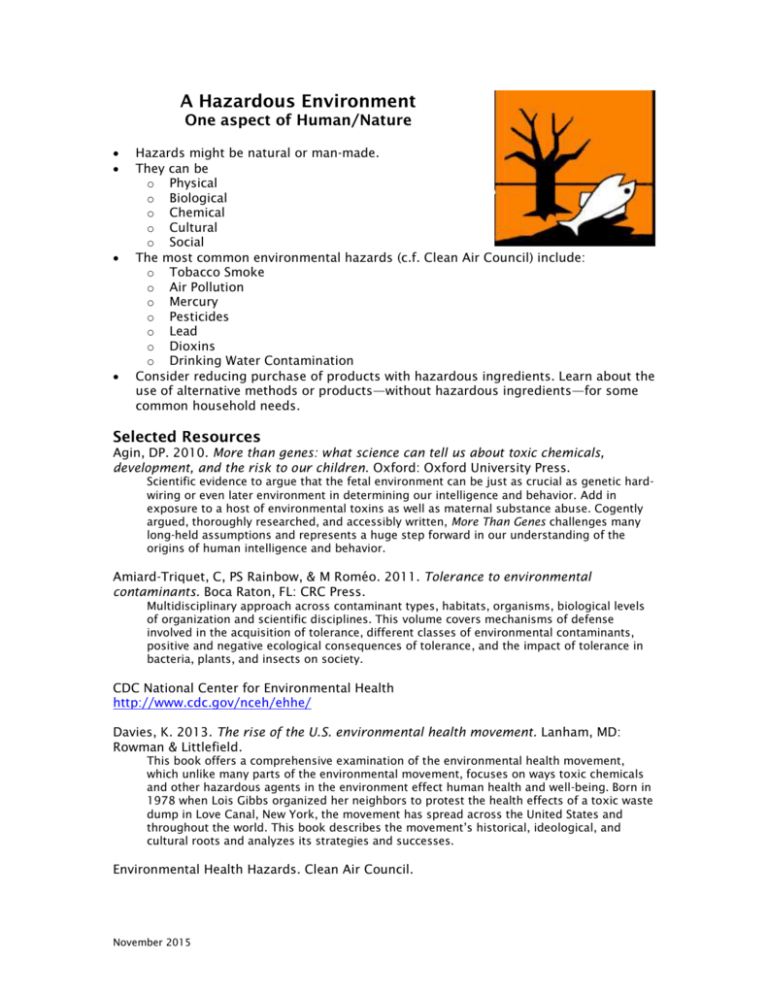
A Hazardous Environment One aspect of Human/Nature Hazards might be natural or man-made. They can be o Physical o Biological o Chemical o Cultural o Social The most common environmental hazards (c.f. Clean Air Council) include: o Tobacco Smoke o Air Pollution o Mercury o Pesticides o Lead o Dioxins o Drinking Water Contamination Consider reducing purchase of products with hazardous ingredients. Learn about the use of alternative methods or products—without hazardous ingredients—for some common household needs. Selected Resources Agin, DP. 2010. More than genes: what science can tell us about toxic chemicals, development, and the risk to our children. Oxford: Oxford University Press. Scientific evidence to argue that the fetal environment can be just as crucial as genetic hardwiring or even later environment in determining our intelligence and behavior. Add in exposure to a host of environmental toxins as well as maternal substance abuse. Cogently argued, thoroughly researched, and accessibly written, More Than Genes challenges many long-held assumptions and represents a huge step forward in our understanding of the origins of human intelligence and behavior. Amiard-Triquet, C, PS Rainbow, & M Roméo. 2011. Tolerance to environmental contaminants. Boca Raton, FL: CRC Press. Multidisciplinary approach across contaminant types, habitats, organisms, biological levels of organization and scientific disciplines. This volume covers mechanisms of defense involved in the acquisition of tolerance, different classes of environmental contaminants, positive and negative ecological consequences of tolerance, and the impact of tolerance in bacteria, plants, and insects on society. CDC National Center for Environmental Health http://www.cdc.gov/nceh/ehhe/ Davies, K. 2013. The rise of the U.S. environmental health movement. Lanham, MD: Rowman & Littlefield. This book offers a comprehensive examination of the environmental health movement, which unlike many parts of the environmental movement, focuses on ways toxic chemicals and other hazardous agents in the environment effect human health and well-being. Born in 1978 when Lois Gibbs organized her neighbors to protest the health effects of a toxic waste dump in Love Canal, New York, the movement has spread across the United States and throughout the world. This book describes the movement’s historical, ideological, and cultural roots and analyzes its strategies and successes. Environmental Health Hazards. Clean Air Council. November 2015 http://www.cleanair.org/program/environmental_health/childrens_environmental_healt h/environmental_health_hazards Hazardous Waste. Environmental Protection Agency. http://www3.epa.gov/epawaste/hazard/ Monosson, E. 2012. Evolution in a toxic world: how life responds to chemical threats. Washington, DC: Island Press. While the study of evolution has advanced many other sciences, from conservation biology to medicine, the field of toxicology has yet to embrace this critical approach. This book traces the development of life's defense systems—the mechanisms that transform, excrete, and stow away potentially harmful chemicals—from more than three billion years ago to today. Beginning with our earliest ancestors' response to ultraviolet radiation, Monosson explores the evolution of chemical defenses such as antioxidants, metal binding proteins, detoxification, and cell death. Scott, DN. 2015. Our chemical selves: gender, toxics, and environmental health. Vancouver: UBC Press. Everyday exposures to common chemicals found in homes, schools, and workplaces are having devastating long-term and inter-generational consequences on human health. At the same time, the effects of the exposures (and the burden of managing the risks of exposures) rest disproportionately on the shoulders of women. This book critically examines the system that manufactures the chemicals as well as the social, political, and gender relations that enable harmful chemicals to continue being produced and consumed. Vogel, SA. 2013. Is it safe?: BPA and the struggle to define the safety of chemicals. Berkeley: University of California Press. We are all just a little bit plastic. Traces of bisphenol A or BPA, a chemical used in plastics production, are widely detected in our bodies and environment. Is this chemical, and its presence in the human body, safe? What is meant by safety? Who defines it, and according to what information? Is It Safe narrates how the meaning of the safety of industrial chemicals has been historically produced by breakthroughs in environmental health research, which in turn trigger contests among trade associations, lawyers, politicians, and citizen activists to set new regulatory standards. Vogel explores the roots of the contemporary debate over the safety of BPA, and the concerns presented by its estrogen-like effects even at low doses. Ultimately, she contends that science alone cannot resolve the political and economic conflicts at play in the definition of safety. To strike a sustainable balance between the interests of commerce and public health requires recognition that powerful interests will always try to shape the criteria for defining safety, and that the agenda for environmental health research should be protected from capture by any single interest group. November 2015


